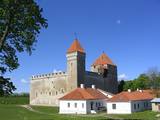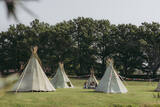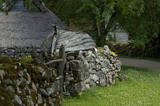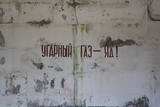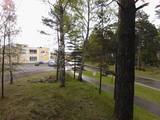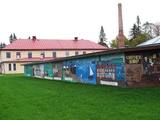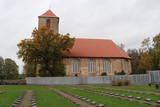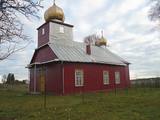| Nr | Name | Beschreibung |
|---|---|---|
|
Die fünftgrößte Insel Estlands. Naturpfade, Vogelbeobachtungsturm, Kapelle von Kassari (18. Jh.) und Sääre tirp – eine 3 km schmale weit ins Meer reichende Landzunge aus Geröll, auf der man spazierengehen kann. |
||
|
Das größte im Baltikum. Marathonloipe von Tartu, Wand der künstlichen Felsen und Trasse der Radmarathon. Skimuseum. Auf der Tehvandi-Sprungschanze ist ein Aussischtsplatform eingerichtet. |
||
|
Sauna Museum is a private open-air museum founded in 2008. It is located 40 km from Riga by the Murjāņi - Saulkrasti road. The exhibition consists of six historic and one newly built sauna. They all work, but the hosts recommend to enjoy the black sauna. |
||
|
Die Geschichte der Bischofsburg reicht bis zum 13. Jahrhundert zurück. In den Kellerräumen sind ständige Expositionen über Natur und Geschichte der Insel Saaremaa untergebracht. Von Mai bis August sind in der Burg verschiedene Handarbeitswerkstätten tätig (Schmiede, Glas-und Keramikwerkstatt, Steinwerkstatt), wo die Gäste auch selbst mitmachen können. In der Nähe befindet sich Bogenschiessplatz. Dort gibt es ausser Bogenschiessen die Möglichkeit, Münzen zu schlagen. |
||
|
Glamping "Kadiķi" is located in Auce region - it will open in July 2021. It is a unique recreation area with a private area where you can find new feelings, spend the night in wigwam, merge with nature, enjoy the peace and quiet far from the city, see flocks of deer and deer, surround the surrounding waters, go hiking on forest trails, archery, enjoy the beauty of the natural landscape and gain an unforgettable rural adventure. The company's values are nature, private space and atmosphere, ecologically responsible attitude towards the environment. The wigwam has amenities worthy of a glamping tent - bed, interior items, outdoor terrace. Guests will also have breakfast. Nomadic Homes also offers to buy or rent wigwams for private events, recreation or starting your own business. |
||
|
Das Dorf Koguva an der Westküste der Insel Muhu ist ein hervorragendes Beispiel für die estnischen Bauernarchitektur. Die relativ gut erhaltenen Bauerngebäuden und Steinzaunen liegen alle unter Baudenkmalschutz. Im Museum von Muhu kann man einen ehemaligen reichen Strandhof Tooma erkundigen, der vor allem als Geburtsort des Schriftstellers Juhan Smuul bekannt. Hier sind auch eine alte Dorfschule und Textilausstellung. |
||
|
Der Pfad beginnt am Hof “Priedīši”. Die Seen Dziļezers, Riebezers, Mazezers, Auziņu Ezers, Skujas Ezers und Bruņķītis befinden sich in einem subglazialen (von Gletschern geformten) Bett, an dessen Ufern verschiedene geschützte Biotope von Laubwäldern beheimatet sind. Diese liegen im Naturschutzgebiet Dziļezers und Riebezers.
|
||
|
This is an area that is full of legend and tale. There is a stiff hillock, which stands about 66 metres above the surrounding land. From its southern side, you can see the Burtnieki lowlands. The tower, however, is not open to the public.
|
||
|
Līdzmūsdienām ir saglabājusies vecā - 18. gs. vidū klasicisma stilā celtā vecā kungu māja (šobrīd netiek izmantota, skaisti sīkrūšu logi!) un tai iepretim - pēc 1905. g. ugunsgrēka atjaunotā (1912. – 1913. g., neoklasicisma stils) jaunā pils, kurā atrodas Īvandes pagasta pārvalde, bibliotēka un jauniešu tūristu mītne. Ēkā saglabājušies atsevišķi interjera elementi – parketa grīdas, koka kāpnes u.c. Muižas parkā joprojām zaļo Baltijā lielākā Eiropas baltegle. Tās augstums pārsniedz 32 m, apkārtmērs - 4 m. Parkā izveidota atpūtas vieta. |
||
|
Маршрут проходит по территории природного парка «Излучины Даугавы». Парк создан с целью сохранения уникальных ландшафтов древней долины Даугавы, биологического многообразия и богатейшего культурно-исторического наследия. Наибольшую высоту берега реки достигают в т.н. «Воротах Даугавы», где возвышаются Верверский и Слутишкский обрывы. С Приедайнской смотровой вышки открывается вид на древнюю долины Даугавы с высоты птичьего полета. В 2015 году в Васаргелишках и на горе Лаздукалнс были построены новые смотровые вышки. Информация о маршруте от Latvijas Lauku forums |
||
|
Abteilung der Brigade der Zenitraketen in Staldzene befindet sich in einem weiten Territorium mit einem großen Gebäudekomplex. Ein Teil der Gebäude wird privat bewirtschaftet, da ist eine Räucherei für Fische eingerichtet.
|
||
|
In der Biographie von K. Valdemārs ist ein bekannter Fakt, dass im Sommer 1839 die Lehrer und Schüler der Volksschule von Lubezere einige Tage am Meer verbrachten – in einer 19 Wersten entfernten Siedlung Roja, wo später unter Vermittlung von K. Valdemārs eine Seefahrtschule gebaut wurde. Das erste Treffen mit dem Meer machte einen atemberaubenden Eindruck auf den Jungen. “Ein großartiger Meeresanblick traf den Jungen wie ein Stoß ins Herz, dass er alle drei Tage nichts anderes dachte, als über großartiges Meer, bei dem mit einer kindlichen Echtheit schon damals einen Plan bzw. Projekt ausarbeitete, auf welche Weise man am Fluss von Roja einen tieferen Hafen für große Boote und kleine Schiffe errichten könnte.” Kr.Valdemārs. (Die Quelle: Roja TIZ) |
||
|
This is on the north-western shore of Lake Lielezers of Limbaži, at the start of the Lielezers nature trail. The tower opens up a view of the lake and its lovely shores. It is worth walking the trail, which is several kilometres long, because it is an interesting one. This is part of the ZBR. |
||
|
Das Café befindet sich neben der alten Backsteinbrücke von Kuldiga mit herrlichem Blick auf die „Ventas Rumba", den breitesten Wasserfall Europas. Grillgerichte im Sommer, Burger, Steaks, Schaschlik und Gebäck. |
||
|
Die Entwicklung des Molkereiwesens in Estland begann in der zweiten Hälfte des 19. Jahrhunderts. Um die Geschichte des Molkereiwesens für nachkommende Generationen zu verewigen, wurde 1976 in Imavere das Estnische Molkereimuseum gegründet. Es gibt eine ständige Ausstellung und eine Exposition im Draussen. Unterschiedliche Museumsprogramme werden angeboten und sind gefragt. Für die Gruppen besteht die Möglichkeit eine Führung zu bestellen. Das estnische Molkereimuseum erzählt über die Herstellung von Milchprodukten zu Hause, hier sind Ausstellungen über die Geschichte der Milchwirtschaft anzusehen. Das Museum veranstaltet auch Workshops zur Herstellung von Süßquark, Käse, Eis und Butter. |
||
|
Lahemaa – the oldest and biggest national park in Estonia – is waiting to be explored. Experiences include a guided nature walk in the bog, a peaceful afternoon in a traditional fishing village, cooking with the local family, a traditional sauna, some farm work and taking part in the local social life. |
||
|
Auf einem Friedhof neben der lutherischen Kirche von Lestene sind mehr als 900 im Zweiten Weltkrieg gefallene Krieger umbestattet worden – vorwiegend die in der Kesselschlacht von Kurland auf dem Gelände von Semgallen und Zentral-Livland Gefallenen. Zum Andenken an die Krieger ist ein von der Bildhauerin Arta Dumpe errichtetes Denkmal “Mutter-Heimat – Lettland” aufgestellt worden. Der Brüderfriedhof von Lestene ist der zweitgrößte (nach dem Rigaer Brüderfriedhof) Bestattungsplatz Lettlands der im Zweiten Weltkrieg gefallenen lettischen Krieger. Auf den Grabsteinen sind die Namen von ~ 11 000 Krieger eingraviert. |
||
|
Notra’s Old-Believers Prayer House. The construction works
lasted from 1928 till 1931. The church is situated on the site of the
previous church that was originally built in 1853.
|
||
|
Eine der größten Fleisch-Milchwirtschaften in der Region Kurzeme (~ 500 Rinder). In Pferchen wird der größte Teil der Geflügel gezüchtet, die für Lettland charakteristisch sind. Hier wird eine Erkundungsführung angeboten und man kann Fleisch, Milch und Eier kaufen. |
||
|
Atrodas Rīgas ielā 8 – skaistā, 1883. g. celtā jūgendstila ēkā . Muzejs (viens no Latgales lielākajiem un vecākajiem) tajā darbojas no 1959. g. (pats muzejs dibināts 1938. g.) un tā krājums vēsta par Daugavpils un tās apkārtnes vēsturiskajiem notikumiem. Tajā regulāri tiek rīkotas arī tematiskās izstādes, piedāvātas muzejpedagoģiskas programmas. Te vēl var apskatīt Daugavpilī dzimušā un pasaulē pazīstamā mākslinieka Marka Rotko (1903. – 1970.) gleznu reprodukcijas, kuras no 2013. gada plānots pārcelt uz M. Rotko centru Daugavpils cietoksnī. |
||




